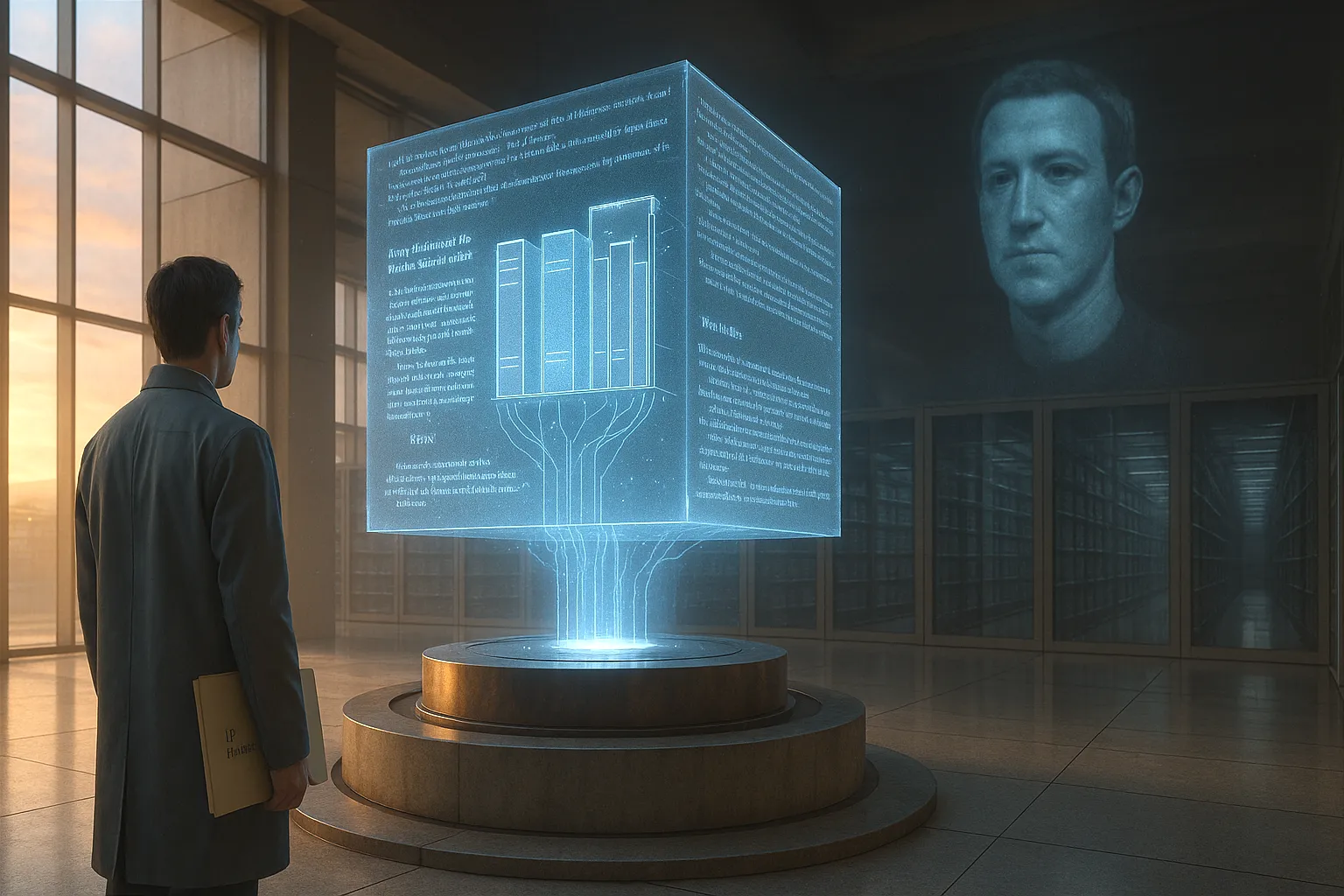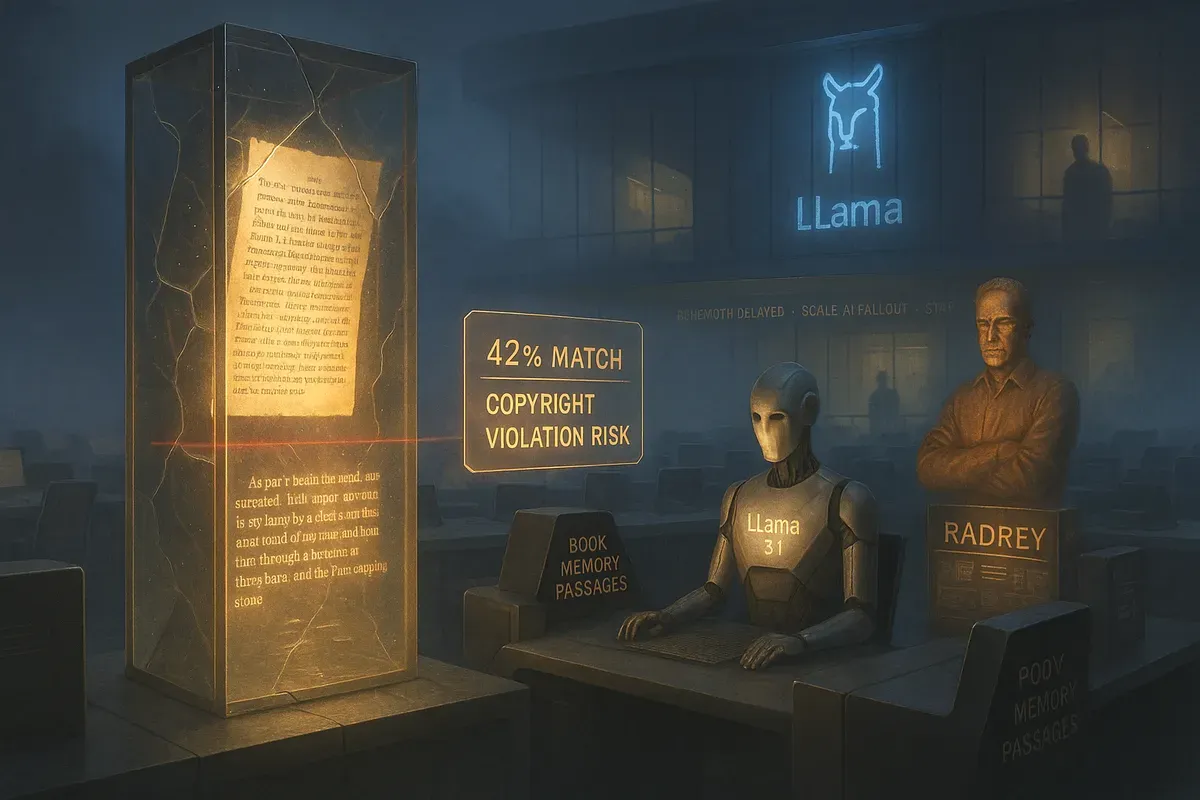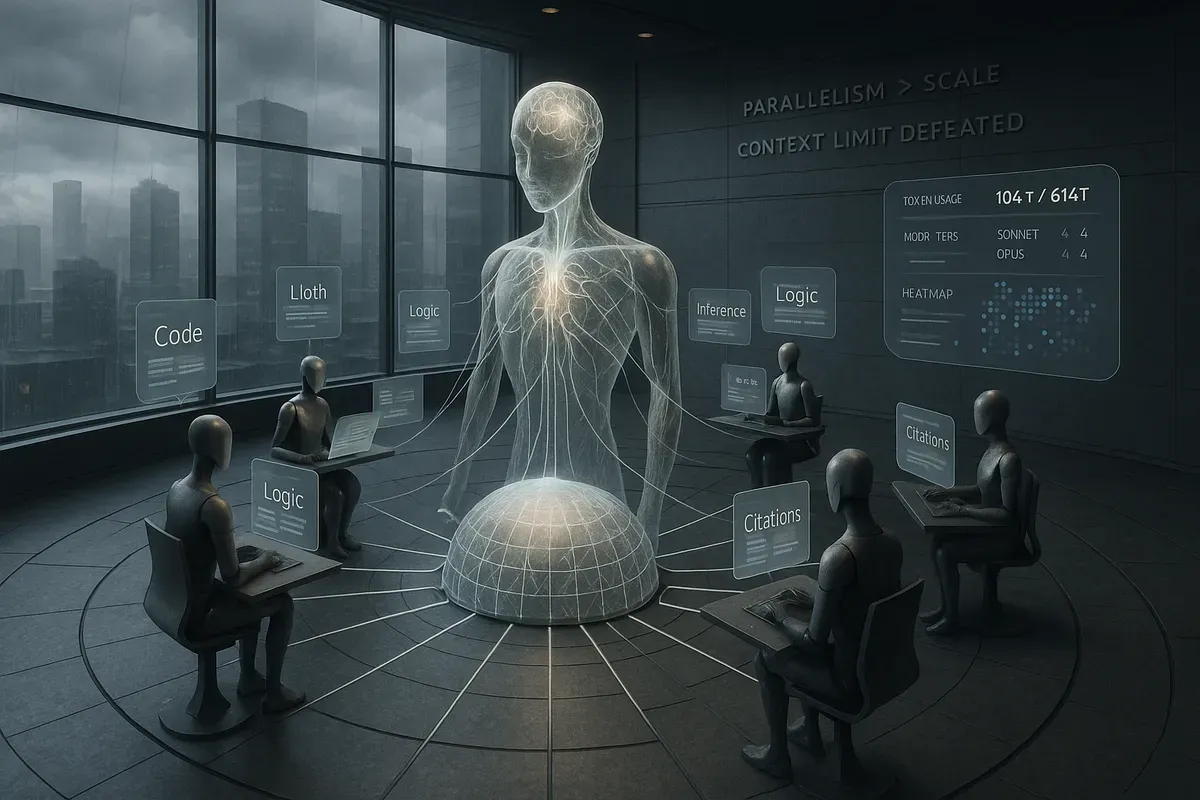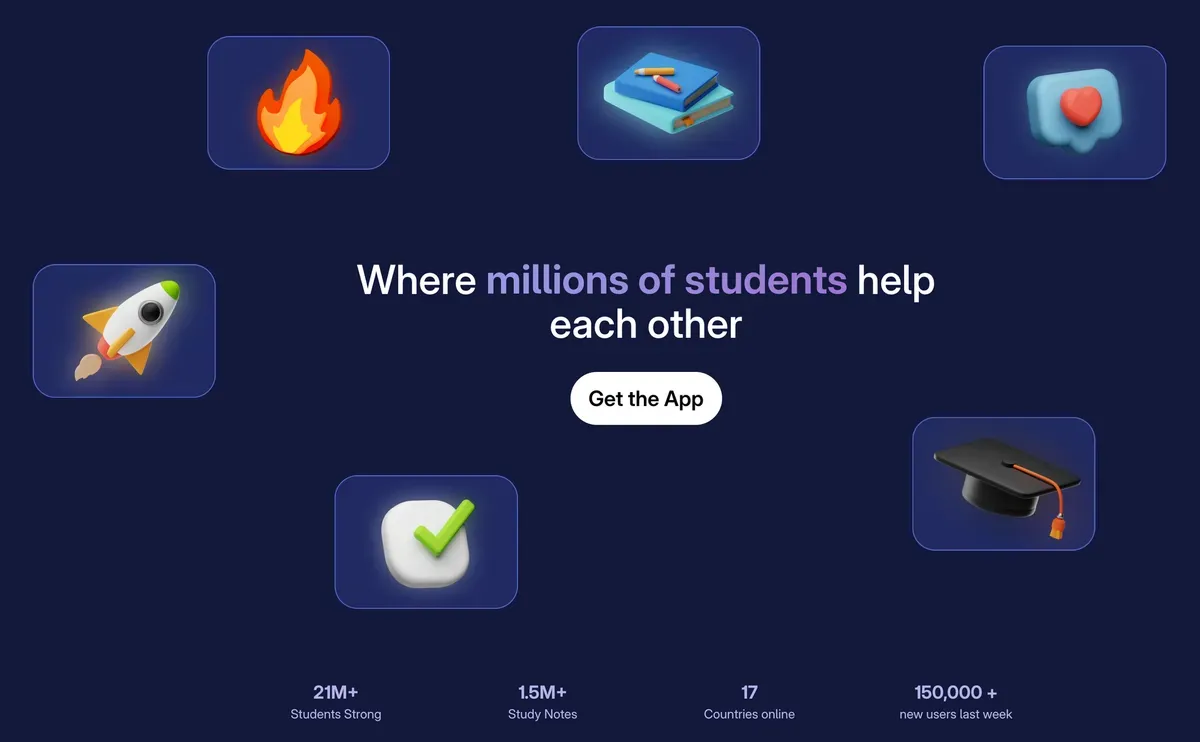Five Replace Fifty. Chips Stay Home.
Good Morning from San Francisco, Coca-Cola swapped fifty crew members for five AI specialists. Production time collapsed from a year

Good Morning from San Francisco, 🌉
AI models memorize books. 📚 Stanford researchers caught Meta's Llama 3.1 reproducing 42% of Harry Potter word-for-word. ⚡ That's ten times more than earlier versions memorized.
The team tested five models on 200,000 books. Popular titles like "The Hobbit" stuck in AI memory. 🧠 Obscure books didn't register.
This wrecks the "we only learn patterns" defense. 💥 Publishers now have smoking-gun evidence for copyright lawsuits.
Companies can't hide behind complexity anymore. The math doesn't lie. 🔢
Stay curious, 🤔
Marcus Schuler

Meta's Llama 3.1 can reproduce 42 percent of "Harry Potter and the Sorcerer's Stone" word-for-word. Stanford researchers discovered this by testing how much copyrighted text AI models store during training.
The problem got worse over time. Meta's earlier model memorized just 4.4 percent of the same book. The newer version absorbed ten times more content despite growing legal pressure over copyright issues.
The researchers tested five AI models on nearly 200,000 books. Popular titles like "The Hobbit" and "1984" showed heavy memorization. Obscure books barely registered any copying.
This creates a legal mess. Publishers suing AI companies can point to clear evidence of copying. But the wild variation between books might break apart class-action lawsuits that assume all authors face similar harm.
Companies that release open models face more legal risk. Researchers can test these systems thoroughly. Closed models from OpenAI and others hide their memorization behind restricted access.
The researchers used probability math instead of generating text. AI models assign odds to every possible next word. High probabilities for long sequences prove the model memorized that content.
Why this matters:
• AI memorization destroys the industry claim that models only learn patterns, not actual text
• Copyright lawsuits now have hard evidence instead of theoretical arguments about fair use
Read on, my dear:

Prompt:
First-person selfie style vertical, a festive group of Vikings on a drakkar deck, wearing furs, leather armor, helmets, braided beards, sea spray visible, ocean horizon behind, film grain, shallow depth, ultra-realistic textures of wood, metal, skin, hearty laughs into camera, cinematic, no smartphone, no modern artifacts

Anthropic cracked a problem that stumped AI developers for years. Instead of building one massive model, they built teams of smaller ones.
Their multi-agent system beats single AI models by 90.2%. The secret lies in coordination, not raw computing power.
The system works like a research team. One lead agent breaks down complex queries and creates specialized sub-agents. Each agent tackles a different angle simultaneously, then reports back with compressed insights.
Three factors explain 95% of performance differences: token usage, tool calls, and model choice. Token usage alone accounts for 80% of the difference.
But here's the catch. Multi-agent systems burn through tokens fast. They use 15 times more tokens than regular chat interactions. A task costing $1 in normal chat might cost $15 with multiple agents.
The economics only work for complex research where better results justify higher costs.
Running 3-5 agents simultaneously instead of sequentially cuts research time by 90%. Tasks that took hours now finish in minutes.
The approach works because research naturally involves exploring multiple sources and angles. Sequential processing creates unnecessary bottlenecks.
Moving from prototype to production revealed unique problems. Agent errors cascade differently than regular software bugs. When one agent fails, it can send the entire system down completely different paths.
Anthropic built resume systems that restart from failure points rather than beginning over. They also needed new debugging approaches since standard monitoring wasn't enough.
Why this matters:
Read on, my dear:

Knowunity.ai is Europe's AI learning platform with 14 million students. Think ChatGPT, but it actually knows what high school feels like.
The app serves as your daily AI study buddy. It offers personalized learning paths, flashcards, quizzes, and an AI tutor named "Mia." Students share notes and help each other - revolutionary stuff, apparently.
The AI uses the Socratic method. It asks questions back instead of just dumping answers. Plus, it talks like Gen Z, not your dusty textbook.
Quick Tutorial:
Example: Ask "Explain photosynthesis" and get an answer that won't put you to sleep.
British universities caught nearly 7,000 students cheating with AI tools in 2023-24, a threefold jump from the previous year. Meanwhile, old-school plagiarism cases dropped from 19 to 15 per 1,000 students as ChatGPT became the new academic sidekick of choice.
President Trump's family entered the wireless business Monday, launching Trump Mobile with unlimited 5G service for $47.45 monthly. The service uses all three major U.S. carriers and promises a gold "T1 Phone" built in America this August.
New York became the first state to ask companies whether AI caused their layoffs, adding a simple checkbox to required forms. No companies have checked the AI box yet, but the move signals growing concern about automation's impact on jobs.
Four German teenagers who started a study app at 17 just raised €27 million to scale their AI tutor globally. Knowunity now serves 20 million students across 15 countries, with one in three German students using the platform that began as a TikTok-style note-sharing app.
Former Delivery Hero executives raised $32 million for Payrails, their enterprise payment platform that processes over 1 million daily operations across 30 markets. The Berlin startup helps large companies manage complex payment flows through a single system that connects with over 100 payment providers.
Your two-factor authentication codes travel through a maze of middlemen before reaching your phone, including companies with ties to government surveillance. Data shows a Swiss firm linked to spy agencies handled over 1 million security codes from Google, Meta, and Amazon in 2023.
China completed its first brain-computer interface trial, letting a paralyzed patient control video games and chess through thought alone. The wireless implant is 100 times more flexible than Neuralink's device and could reach market by 2028.
Amazon and Roku struck a deal that lets advertisers reach over 80% of connected TV households through one platform. Early tests show ads reached 40% more viewers at no extra cost while cutting repetitive ad exposure by nearly 30%, launching in Q4 2025.

TikTok rolled out new AI tools that let brands create video ads without hiring actual humans. The platform's Symphony system now turns text prompts or product photos into five-second clips featuring digital avatars who model clothes, hold products, and demo apps.
The timing feels deliberate. TikTok announced these features at Cannes Lions, the advertising world's biggest gathering, while facing a potential US ban. The message seems clear: we're the future of digital marketing, political uncertainty aside.
Brands get cheaper content. Platforms get more ads. The only losers are the thousands of influencers who built careers selling stuff to their followers.
TikTok already lets advertisers use AI spokespeople. These new tools go further, creating synthetic influencers who can interact with products like real people. Upload a sneaker photo, add a prompt, and get a video of an AI model trying them on.
WPP became the first major agency to integrate Symphony into its AI platform. The advertising giant invested £300 million in AI this year and sees TikTok's tools as a way to "blend the magic of the human touch with the power of AI." The irony writes itself.
Adobe also added Symphony features to Adobe Express, its social content platform. Danone is already testing the tools for its plant-based brand Alpro.
TikTok promises to label all AI-generated content and put it through safety reviews. But that raises an obvious question: if viewers know the recommendation comes from a fake person, does it still work?
The influencer economy thrived because people trusted other people. Followers believed their favorite creators actually used the products they promoted. AI avatars eliminate that human connection, replacing it with algorithmic efficiency.
Why this matters:
Read on, my dear:
Knowunity A German teen startup turned peer-to-peer learning into a 20-million-user empire. Their TikTok-meets-textbook formula cracked the code on Gen-Z education.
The Founders
The Product
The Competition
Financing
The Future Knowunity targets a billion students worldwide with AI-powered personalized learning. Their network effects create a moat - more creators attract more users in endless loop. The challenge: scaling quality content while monetizing without alienating their free-loving Gen-Z base. International expansion into massive markets like US and India will test their localization playbook. ⭐⭐⭐⭐ Strong prospects if they execute global expansion smartly.
Get the 5-minute Silicon Valley AI briefing, every weekday morning — free.